Art History
Who Reigned Supreme, Persia or Greece? Judge for Yourself From These 5 Ancient Symbols of Luxury and Power, Now on View at the British Museum
“Luxury and Power: Persia to Greece,” is on view at the British Museum through August 13.

“Luxury and Power: Persia to Greece,” is on view at the British Museum through August 13.

Vittoria Benzine

History has long pitted Persian and Greek societies as moral opposites—the former, a culture of hedonists, and the latter defined by no-frills self discipline. A new exhibition titled “Luxury and Power: Persia to Greece,” on view at the British Museum through August 13, reexamines that stale, Orientalist worldview. Instead, it illustrates how sensuous aesthetics permeated Persian culture, then went on to fascinate Hellenistic craftspeople and consumers alike, especially once Alexander the Great conquered the Achaemenid empire after a 10 year invasion starting in 334 B.C.E.
Look around—you’ll find those tensions between decrying and coveting opulence persist today. Indeed, other writers have questioned the British Museum’s hosting of this exhibition while conflicts over the Parthenon Marbles and the institution’s colonialist origins persist.
Exploring the symbolic power of luxury itself through the lens of this particular origin story, the compact exhibition arranges 500 years’ worth of artifacts from the museum’s own collection alongside superstar loans like the Panagyurishte treasure from Bulgaria. Objects like iridescent drinking vessels join jewelry, reconstructed costumes, authentic tomb reliefs, and more in an appropriately dramatic setting, filled with columns and billowing fabric. If you can’t see “Luxury and Power” in person, we bring you five highlights to savor here.
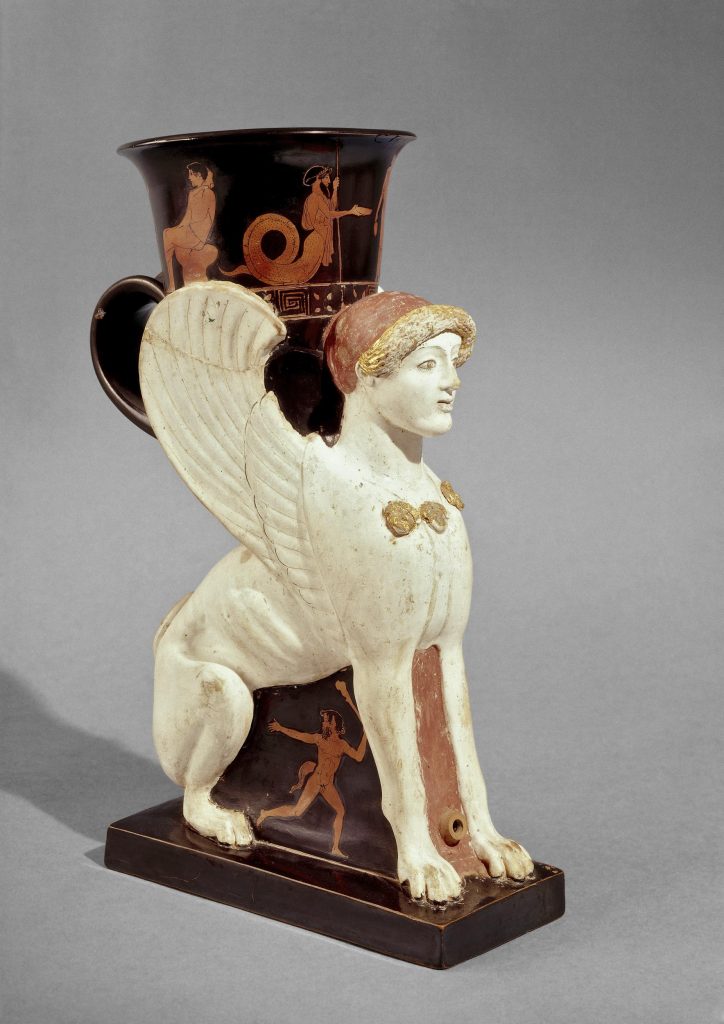
Pottery rhyton in the form of a seated sphinx, attributed to The Sotades Painter, Greece, about 470–450 B.C.E. Courtesy of the British Museum
Some reviews have questioned how successfully “Luxury and Power” synthesizes cultures across its chronological format, but this standing sphinx vessel is a strong example to the museum’s point, turning a form of sculptural collage into functional design. And while there’s no actual spirits on offer in the galleries, wine proves to be a prolific status symbol across the show, omnipresent through the vast variety of drinking vessels like amphoras and kylixes on view, many in the shape of animals like boars and lions as well as mythical beasts. Early depictions of the lion-eagle-woman hybrid date back to Egypt’s fourth-century Great Sphinx of Giza, but another, of course, famously appears in Sophocles’s Oedipus Rex.
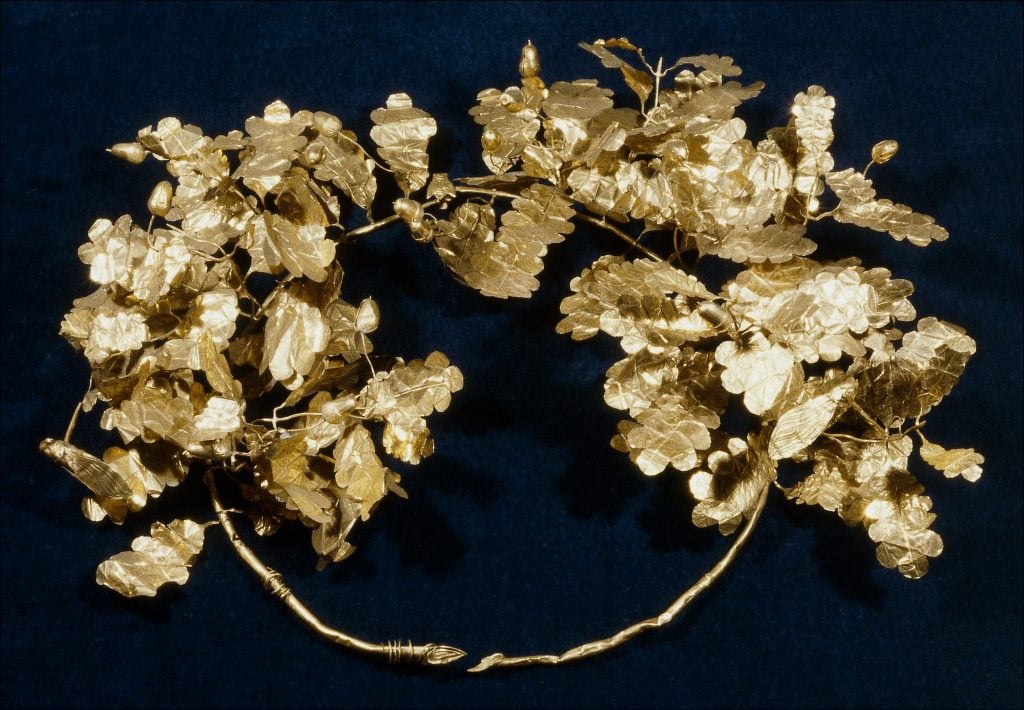
A gold oak wreath. Courtesy of the British Museum
This gem, from the museum’s collection, balances precious metal with delicate natural motifs. Circlets like these were found at burials and temple dedications, the museum’s site says, and were offered as prizes in various competition. This specimen features 15 acorns, two cicadas, and a bee—if you can find them nestled among the oak leave. Bees and acorns are straightforward emblems of abundance, but cicadas send many contemporary folks screaming like the bugs themselves. Since ancient times, across cultures, they also connote the endless organic life cycle of decay and renewal.
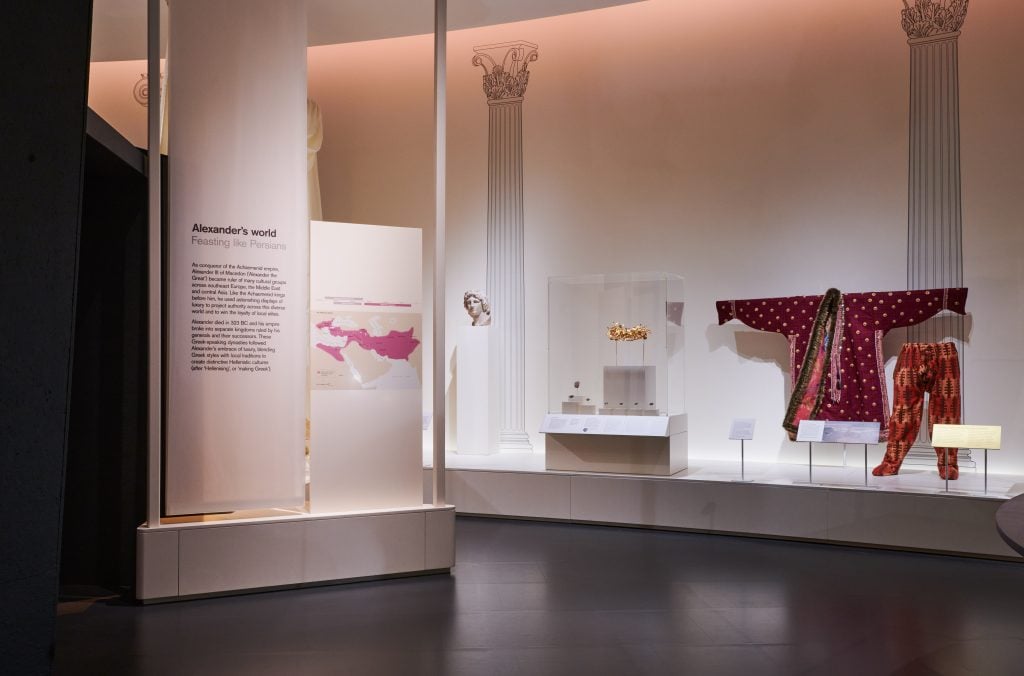
“Luxury and power” installation view. Courtesy of the British Museum
Contemporary sights still stun in this show, including this recreation of a Persian riding dress. Unlike England, the Achaemenid empire never had an outright crown—instead, an article by the museum explains, initiates donned an ornate costume with fur and meticulous embroidery much like this one and completed a ritual that incorporated elements of hazing. Rulers were forced to drink sour milk and more to humbly remind them of their common, nomadic, tribal beginnings.
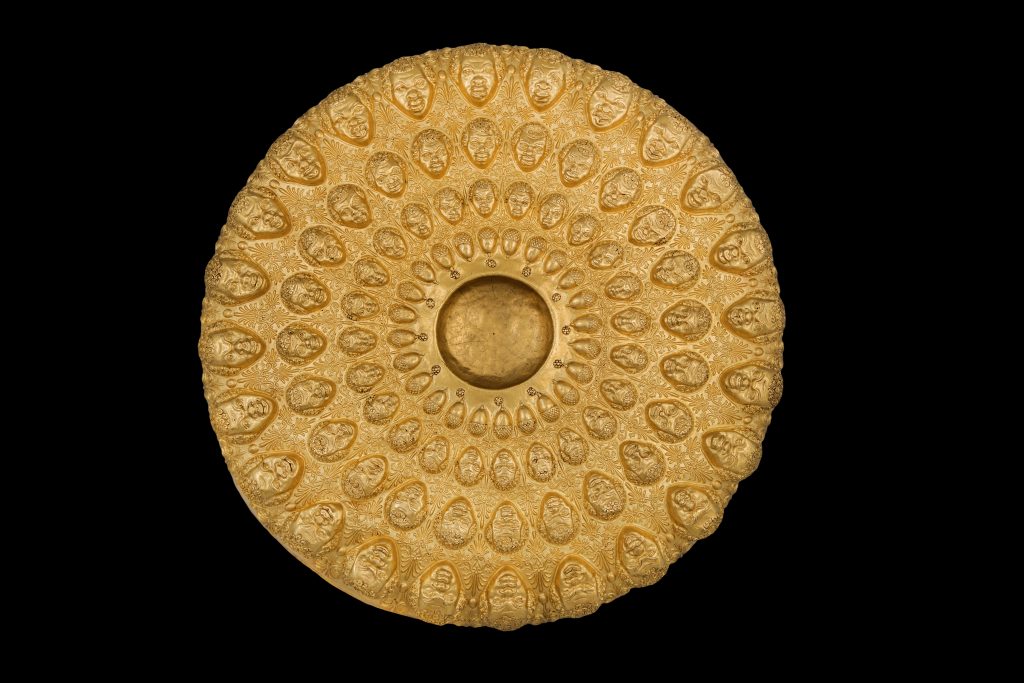
Panagyurishte Treasure, Phiale. © National Museum of History, Bulgaria. Courtesy of the British Museum
Three brothers harvesting clay to make bricks unwittingly stumbled upon buried treasure, or so goes the story of the Panagyurishte Treasure, unearthed in 1949. The nine-piece set spans eight rhyta wine-pouring vessels and one bowl for drinking, altogether amounting to over 13 pounds of shaped and sculpted gold that demonstrates both Greek and Persian influence. On loan from Bulgaria, where the brothers first discovered it, “Luxury and Power” marks the Panagyurishte Treasure’s first time on view in the U.K. since 1976—a “once in a lifetime opportunity,” per the museum. This piece, the bowl of the set, features an Escher-esque ring of faces, mouths all agape, that become a ring of acorns at the center.
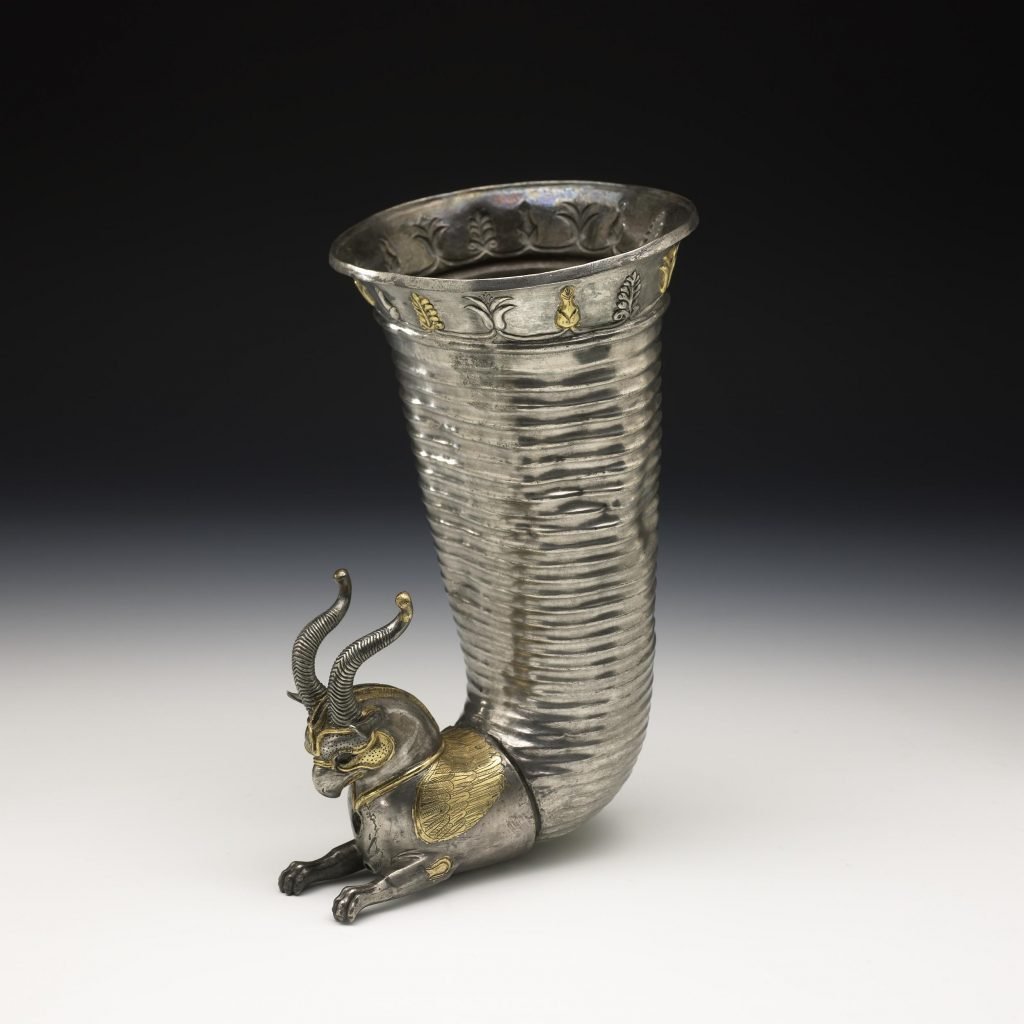
Gilt silver rhyton © The Trustees of the British Museum
This gem from the museum’s collection would have been used to pour wine into a different version of the drinking bowl above. A horned griffin—half lion, half eagle—protrudes from its front for extra flourish. In a video on Aeon, the British Museum’s curator James Fraser emphasized the extraordinary detail on this critter, from the ridges of its horn and splay of its claws to the fluffy texture on its feathers—although some of these details were touched up by museum conservators. While Fraser repeatedly noted the object’s “supreme luxury,” crowned by celebratory botanicals on its lip, the object we see today is missing the original jewel from its pendant and the gold foil that would’ve made up its mane, making it even more luxe.
“Luxury and Power: Persia to Greece” is on view at the British Museum, Great Russell St, London, through August 13.
More Trending Stories:
The Art Angle Podcast: James Murdoch on His Vision for Art Basel and the Future of Culture
A Sculpture Depicting King Tut as a Black Man Is Sparking International Outrage